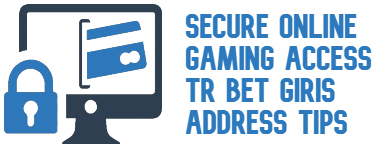In today’s digital landscape, a single compromised password can lead to identity theft, financial loss, and privacy breaches across multiple platforms. With cybercriminals employing increasingly sophisticated techniques, implementing secure login practices has never been more critical. This guide outlines essential strategies to protect your online accounts from unauthorized access and keep your sensitive information safe from digital threats.
Create Strong, Unique Passwords
The foundation of account security begins with password strength. Follow these guidelines to create truly secure passwords:
- Length matters: Use at least 12 characters, preferably more
- Complexity is key: Combine uppercase letters, lowercase letters, numbers, and special characters
- Avoid predictable patterns: Don’t use sequential numbers (123) or keyboard patterns (qwerty)
- Make it unique: Create a different password for every account
- Skip personal information: Avoid birthdays, names, or other easily guessable personal details
A strong password might look like T5%bNp7$Kd@L2^Zq – difficult for humans to remember, but also challenging for password-cracking tools to guess.
Implement Two-Factor Authentication (2FA)
Two-factor authentication adds a crucial second layer of security beyond your password. When enabled, accessing your account requires:
- Something you know (your password)
- Something you have (typically your smartphone)
Common 2FA methods include:
- SMS text codes
- Authentication apps (Google Authenticator, Authy)
- Physical security keys (YubiKey)
- Biometric verification (fingerprint, face recognition)
While any form of 2FA significantly improves security, authenticator apps offer better protection than SMS codes, which can be vulnerable to SIM-swapping attacks.

Leverage Password Managers
Managing dozens of complex, unique passwords is virtually impossible without assistance. Password managers solve this challenge by:
- Generating strong, random passwords for each account
- Securely storing all your credentials in an encrypted vault
- Auto-filling login forms across devices
- Alerting you to potentially compromised passwords
Popular options include LastPass, Bitwarden, 1Password, and Dashlane. With a password manager, you only need to remember one master password while maintaining unique credentials for all your accounts.

Recognize and Avoid Phishing Attempts
Even the strongest password won’t protect you if you unknowingly provide it to attackers. Learn to identify phishing attempts:
- Verify sender email addresses carefully (watch for subtle misspellings)
- Be suspicious of urgent requests for credential verification
- Hover over links before clicking to preview the actual URL
- Access sensitive websites directly through your browser, not email links
- Check for HTTPS and security indicators in your browser
Remember that legitimate companies will never ask for your password via email or message.
Conduct Regular Security Check-ups
Maintaining login security requires ongoing vigilance:
- Review account activity logs for suspicious behavior
- Check which devices and apps have access to your accounts
- Enable login notifications for important accounts
- Update passwords periodically, especially after data breach announcements
- Keep your devices and browsers updated with security patches
Many services like Google and Facebook offer security checkup tools that guide you through reviewing your security settings.
Conclusion: Building Your Digital Security Perimeter
Implementing these secure login practices creates multiple layers of protection against unauthorized access. Start by securing your most sensitive accounts first—email, banking, and primary social media profiles—as these often serve as gateways to your other accounts.
Remember that digital security is never “set and forget.” Staying informed about emerging threats and regularly reviewing your security practices remains essential in our constantly evolving digital landscape. The few minutes required to implement these measures could save countless hours dealing with the aftermath of a compromised account.
